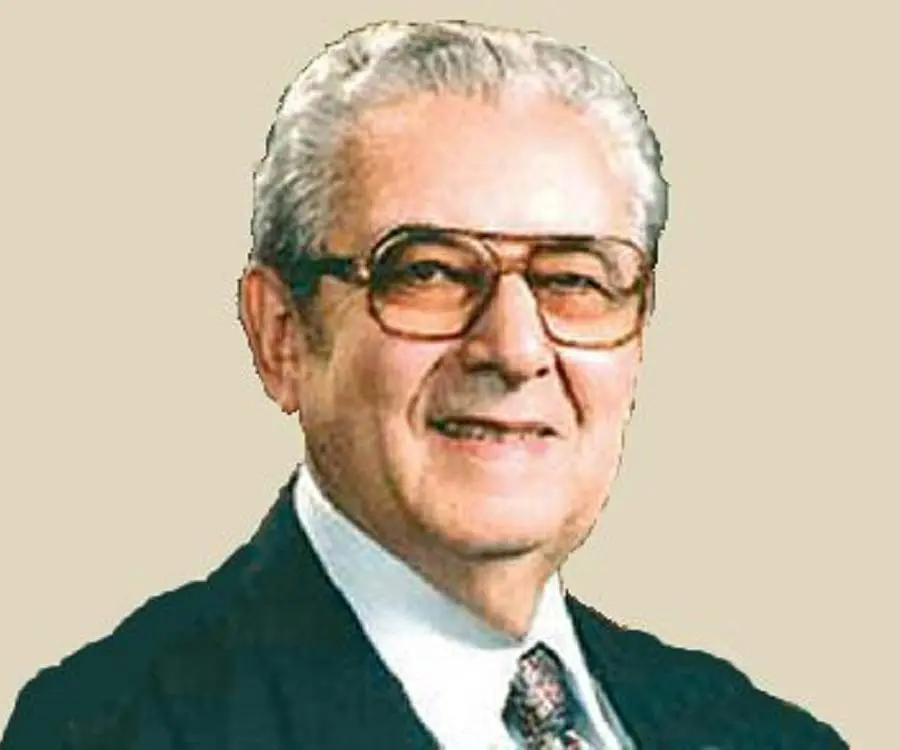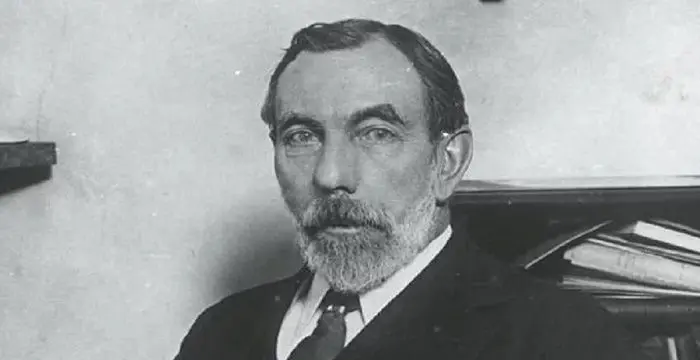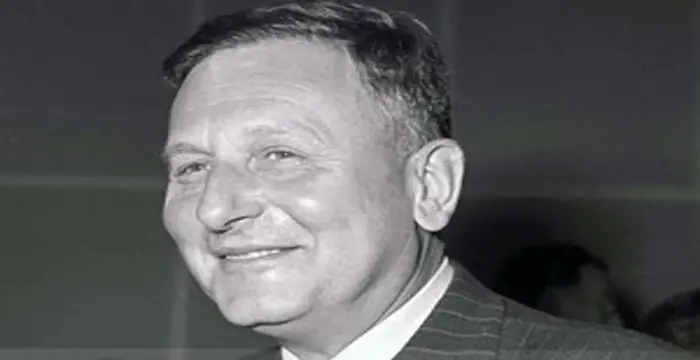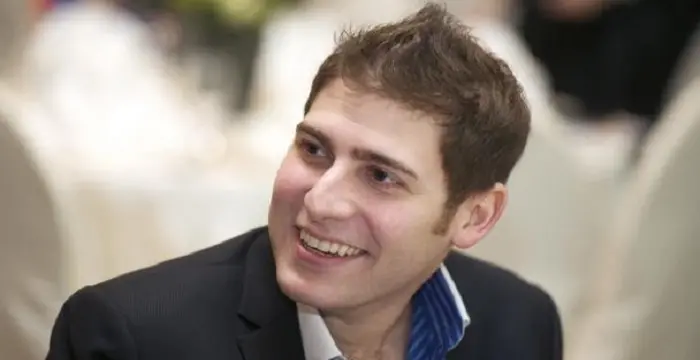
Herbert C. Brown - Chemists, Timeline and Childhood
Herbert C. Brown's Personal Details
Herbert C
| Information | Detail |
|---|---|
| Birthday | May 22, 1912 |
| Died on | December 19, 2004 |
| Nationality | American |
| Famous | University Of Chicago, Scientists, Chemists, Inorganic Chemists, Organic Chemists |
| Spouses | Sarah Baylen (1937–2004) |
| Known as | Herbert Brovarnik |
| Universities |
|
| Notable Alumnis |
|
| Birth Place | London, England, |
| Gender | Male |
| Father | Charles Brovarnik |
| Mother | Pearl Gorinstein |
| Sun Sign | Gemini |
| Born in | London, England, |
| Famous as | Chemist |
| Died at Age | 92 |
// Famous Chemists
Henry Cavendish
Henry Cavendish was a theoretical chemist and physicist, renowned for discovery of hydrogen and calculation of the mass of earth. To know more about his childhood, profile, timeline and career read on
Walter Kohn
Nobel Laureate Walter Kohn was an Austrian-born American theoretical chemist and physicist. Check out this biography to know about his childhood, life, achievements, works & timeline.
Jabir Ibn Hayyan
Jabir Ibn Hayyan was a medieval era polymath. Check out this biography to know about his life, works and achievements.
Herbert C. Brown's photo
Who is Herbert C. Brown?
Herbert C. Brown was an English-born American chemist who won a share of the Nobel Prize in Chemistry in 1979 for his work with organoboranes. He made several notable contributions to the field of organic chemistry, especially to organoboron chemistry or organoborane chemistry. The son of Jewish immigrants in London, he moved to the United States with his family when he was a toddler. He was a brilliant student from a young age and developed a voracious reading habit. An unfortunate incident during his high school years forced him to drop out but the determined boy persevered and completed his graduation. More difficulties followed during the Great Depression but Brown somehow continued his education and earned a B.S. in 1936, followed by a doctorate two years later. Married by now, he looked for a job but was unable to find a suitable one. Thus he was pushed into an academic career as a post-doctorate fellow and began his research in chemistry that would eventually lead to his seminal work with organoboranes. He worked along with Hermann Irving Schlesinger in his laboratory and the two men came up with significant discoveries for the National Defense Research Committee. Brown spent most of his academic career at Purdue University in West Lafayette, Indiana, and retired in 1978.
// Famous Inorganic Chemists
William Ramsay
William Ramsay was a Nobel Prize winning chemist who discovered the ‘noble gases’. To know more about his childhood, profile, timeline and career read on
Alfred Werner
Alfred Werner was a Swiss chemist and the founder of coordination chemistry. This biography of Werner provides detailed information about his childhood, life, research, work, achievements and timeline.
Paul Hermann Müller
Paul Hermann Muller was a Swiss Chemist who won the Nobel Prize in Physiology or Medicine for his discovery of a form of DDT. This biography profiles his childhood, life, research, achievements and timeline.
Childhood & Early Life
He was born as Herbert Brovarnik on May 22, 1912, in London, England, UK. His parents, Charles Brovarnik and Pearl Gorinstein, were born in Zhitomir in the Ukraine and came to London in 1908. He had three sisters.
The family moved to the United States in 1914 where his father opened a small hardware store. Herbert went to the Haven School where he excelled in his studies. He then went to Englewood High School but was forced to drop out after the untimely death of his father in 1926.
He tried to manage his father’s business but realized that business held no interest for him. So he returned to school and graduated in 1930. The Great Depression was going on at that time and Brown was unable to find a good job. So, he decided to further his education.
He planned to major in electrical engineering but his interest soon shifted to chemistry. He had just completed one semester at Crane Junior College when it was announced in 1933 that the school was to be closed for lack of funds. Following this he went to night school at the Lewis Institute and also worked odd jobs to make ends meet.
During this time, one of his instructors at Crane opened his laboratory to several students so that they could continue their studies. Brown along with several others experimented there.
He joined the Wright Junior College in 1934 and graduated in 1935. He then entered the University of Chicago in the Fall of 1935 on a half scholarship and received the B.S. in 1936. He then proceeded to complete his doctorate in 1938.
Career
Married by now, Herbert C. Brown began looking for an industrial position but was unable to find one. At this time, Professor M.S. Kharasch offered him a position as a post doctorate at a stipend of $1600 which he accepted.
In 1939, Herbert C. Brown was invited by Professor Schlesinger to become his research assistant with the rank of an instructor at the University of Chicago. The duo began their research on volatile, low molecular weight uranium compounds for the National Defense Research Committee.
Their collaboration was a successful one and they were able to synthesize volatile uranium (IV) borohydride, which had a molecular weight of 298. Their research also led to the discovery that lithium hydride reacts with boron trifluoride in ethyl ether, allowing them to produce diborane in larger quantities.
During the World War II, Brown and Schlesinger discovered a method for producing sodium borohydride (NaBH4), which can be used to produce boranes (compounds of boron and hydrogen). This work led to the development of the first general method for producing asymmetric pure enantiomers.
After working for four years at Chicago, he moved to the Wayne University in Detroit as an assistant professor. He was promoted to associate professor in 1946.
In 1947 he moved to the Purdue University as a professor of inorganic chemistry. He spent the rest of academic career there and became a Professor Emeritus in 1978. He was also an honorary member of the International Academy of Science.
Major Works
Brown was renowned for his works with organoboranes or organoboron compounds which are chemical compounds of boron and carbon that are organic derivatives of BH3. He is credited to have discovered the concept that boranes react rapidly to alkenes in a process called hydroboration.
Awards & Achievements
In 1979, Herbert C. Brown and Georg Wittig were jointly awarded the Nobel Prize in Chemistry "for their development of the use of boron- and phosphorus-containing compounds, respectively, into important reagents in organic synthesis"
He was also the recipient of other prestigious awards like Priestley Medal (1981), Perkin Medal (1982), AIC Gold Medal (1985), and NAS Award in Chemical Sciences (1987).
Personal Life & Legacy.
He met and fell in love with Sarah Baylen while they were both students. The couple tied the knot in 1937 and were blessed with one child. They were happily married until Brown’s death.
Herbert C. Brown suffered a heart attack and died on December 19, 2004, at the age of 92.
// Famous University Of Chicago
Satya Nadella
Satya Nadella is the current CEO of Microsoft. This biography provides detailed information about his childhood, profile, career, net worth & timeline
Emily Greene Balch
Emily Greene Balch was an American economist, sociologist and pacifist who won the 1946 Nobel Peace Prize. This biography of Emily Greene Balch provides detailed information about her childhood, life, achievements, works & timeline.
Susan Sontag
Susan Sontag is an American critical essayist, cultural analyst, novelist, political activist, filmmaker and playwright of international repute. Read on to find out more about her childhood, career, profile and timeline.
Herbert C. Brown biography timelines
- // 22nd May 1908 To 22nd May 1912He was born as Herbert Brovarnik on May 22, 1912, in London, England, UK. His parents, Charles Brovarnik and Pearl Gorinstein, were born in Zhitomir in the Ukraine and came to London in 1908. He had three sisters.
- // 1914 To 1926The family moved to the United States in 1914 where his father opened a small hardware store. Herbert went to the Haven School where he excelled in his studies. He then went to Englewood High School but was forced to drop out after the untimely death of his father in 1926.
- // 1930He tried to manage his father’s business but realized that business held no interest for him. So he returned to school and graduated in 1930. The Great Depression was going on at that time and Brown was unable to find a good job. So, he decided to further his education.
- // 1933He planned to major in electrical engineering but his interest soon shifted to chemistry. He had just completed one semester at Crane Junior College when it was announced in 1933 that the school was to be closed for lack of funds. Following this he went to night school at the Lewis Institute and also worked odd jobs to make ends meet.
- // 1934 To 1938He joined the Wright Junior College in 1934 and graduated in 1935. He then entered the University of Chicago in the Fall of 1935 on a half scholarship and received the B.S. in 1936. He then proceeded to complete his doctorate in 1938.
- // 1937He met and fell in love with Sarah Baylen while they were both students. The couple tied the knot in 1937 and were blessed with one child. They were happily married until Brown’s death.
- // 1939In 1939, Herbert C. Brown was invited by Professor Schlesinger to become his research assistant with the rank of an instructor at the University of Chicago. The duo began their research on volatile, low molecular weight uranium compounds for the National Defense Research Committee.
- // 1946After working for four years at Chicago, he moved to the Wayne University in Detroit as an assistant professor. He was promoted to associate professor in 1946.
- // 1947 To 1978In 1947 he moved to the Purdue University as a professor of inorganic chemistry. He spent the rest of academic career there and became a Professor Emeritus in 1978. He was also an honorary member of the International Academy of Science.
- // 1979In 1979, Herbert C. Brown and Georg Wittig were jointly awarded the Nobel Prize in Chemistry "for their development of the use of boron- and phosphorus-containing compounds, respectively, into important reagents in organic synthesis"
- // 19th Dec 2004Herbert C. Brown suffered a heart attack and died on December 19, 2004, at the age of 92.
// Famous Scientists
Juliane Koepcke
Juliane Koepcke is a German-Peruvian biologist, who was the lone survivor among the 92 passengers and crew of the ill-fated LANSA Flight 508 that crashed in the Peruvian rainforest on 24 December 1971. Know more about her life in this biography.
Henry Cavendish
Henry Cavendish was a theoretical chemist and physicist, renowned for discovery of hydrogen and calculation of the mass of earth. To know more about his childhood, profile, timeline and career read on
Konstantin Tsiolkovsky
Konstantin Tsiolkovsky was a Russian rocket scientist and a pioneer of astronautics. This biography provides detailed information about his childhood, family, personal life, career, achievements, etc.
Gabe Newell
Gabe Newell is an American computer programmer and businessman, best known as the co-founder of ‘Valve Corporation.’ This biography provides detailed information about his childhood, family, personal life, career, etc.
Grigori Perelman
Grigori Perelman is a Russian mathematician who is best known for his contributions to Riemannian geometry and geometric topology. Check out this biography to know about his childhood, family life, achievements and fun facts about him.
Eduardo Saverin
Eduardo Luiz Saverin is a Brazilian internet entrepreneur and investor. This biography profiles his childhood, life, career, achievements, and timeline
Herbert C. Brown's FAQ
What is Herbert C. Brown birthday?
Herbert C. Brown was born at 1912-05-22
When was Herbert C. Brown died?
Herbert C. Brown was died at 2004-12-19
Where was Herbert C. Brown died?
Herbert C. Brown was died in Lafayette, Indiana, USA
Which age was Herbert C. Brown died?
Herbert C. Brown was died at age 92
Where is Herbert C. Brown's birth place?
Herbert C. Brown was born in London, England,
What is Herbert C. Brown nationalities?
Herbert C. Brown's nationalities is American
Who is Herbert C. Brown spouses?
Herbert C. Brown's spouses is Sarah Baylen (1937–2004)
What was Herbert C. Brown universities?
Herbert C. Brown studied at University Of Chicago
What was Herbert C. Brown notable alumnis?
Herbert C. Brown's notable alumnis is University Of Chicago
Who is Herbert C. Brown's father?
Herbert C. Brown's father is Charles Brovarnik
Who is Herbert C. Brown's mother?
Herbert C. Brown's mother is Pearl Gorinstein
What is Herbert C. Brown's sun sign?
Herbert C. Brown is Gemini
How famous is Herbert C. Brown?
Herbert C. Brown is famouse as Chemist














